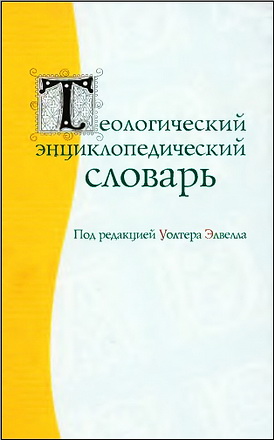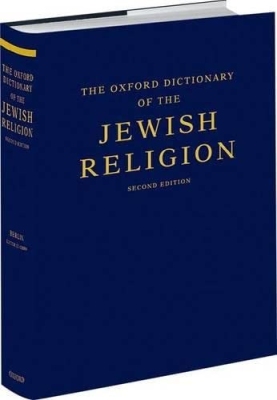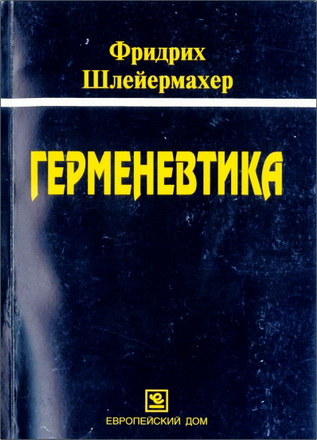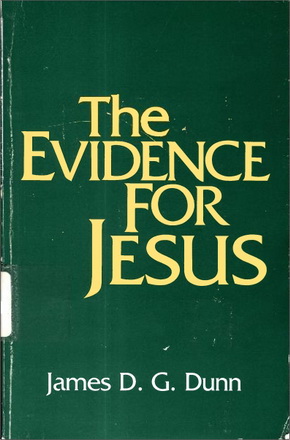
Berlin - Grossman - The Oxford Dictionary of the Jewish Religion - модуль BibleQuote
Adele Berlin, Maxine Grossman - The Oxford Dictionary of the Jewish Religion
2nd Edition. - Oxford: Oxford University Press, 2011. – 960 p.
ISBN-10: 0199730040
ISBN-13: 978-0199730049
In 2,400 entries, The Oxford Dictionary of the Jewish Religion covers more than three millennia of Jewish religious thought, custom, law, and practice, from traditional approaches to Reform, Conservative, Reconstructionist and post-denominational Judaism. Brief definitions and longer essays, all supplemented with bibliographies, enlighten readers about the major figures, folklore, and events in the history of Judaism throughout the world.
When The Oxford Dictionary of the Jewish Religion was published in 1997, it was lauded as “the most complete one-volume resource available for information on the concepts, beliefs, and practices of Judaism, in the past and today” (Canadian Jewish News). The PSP awards that year gave it an honorable mention and Library Journal called it the “best ready-reference access point to the Jewish religion.”
Since ODJR’s publication, recent and changing rituals in the Jewish community—for example, the growth of baby-naming ceremonies and the founding of gay/lesbian synagogues—have made the need for a thoroughly updated new edition both apparent and pressing.
* * *
The goals of this volume remain the same as its predecessor’s: to be a scholarly and accessible reference for the Jewish religion. It bears reiterating that this is a Dictionary of the Jewish Religion and does not encompass all of Jewish history or culture. It is not a Dictionary of Jewish Studies, Jewish History, or of Judaism in all its dimensions, but focuses on Jewish religious terminology, texts, figures, institutions, concepts, beliefs, and practices. The editors of the first edition intentionally chose the term “Jewish religion” rather than “Judaism,” because, as they said, “Judaism implies a more secular focus and a broad sociocultural approach to the subject” whereas they wished to focus on religion per se. It seems to us that their choice of terms also reflects a time when Jewishness was perceived and promoted as a religious identity rather than as an ethnic one. That has changed to some degree during the last decades; the ethnic component of Jewish identity is more readily acknowledged now, even as Jews as a group have become more biologically diverse. To espouse Judaism does not mean to have Jewish DNA (there is no such thing), but to identify with the Jewish community, past and present, its beliefs, culture, and lifestyles—in short, its way of being in the world. A very large part of this identification may be defined as “religion,” for this term, as the editors of the first edition acknowledged, is not easy to contain. In the case of the Jewish religion it encompasses not only beliefs and rituals, but also a legal (halakhic) system, communal structures and functions, the concept of Israel and the Diaspora, and much more that might not immediately be thought to belong under the heading of “religion.” So Jewish religion in its broad sense is the subject of this volume.
Our appreciation for the volume we inherited, and for its editors-in-chief and their topic editors and consultants, has grown as we have read and reread it. Many world-class experts contributed entries that present a goldmine of information in concise form. The majority of entries remain as complete and compelling now as they were when they were written. Some entries, we felt, could benefit from updating to incorporate more recent scholarship or to describe further developments in phenomena addressed very briefly or not at all in the first edition. In some cases, the original authors updated their entries; in other cases, new authors were commissioned for the revisions. The editors took upon themselves a good bit of revising as well. At least half of the entries received some revision, and bibliographic references to recent scholarship have been added to about 75 percent of the entries (and some older references have been deleted). As in the 1997 edition, the bibliographies give priority to recent English-language printed research, along with some works in other languages, especially Hebrew; only in a few cases are electronic sources included. These editorial revisions notwithstanding, we aimed to preserve the integrity of each entry.
In addition to the updates, new entries were added; and some entries were rewritten to such an extent that they may be considered new entries. These additions are of three types: (1) Important religious leaders who have died since the 1997 edition was prepared. We have maintained the convention of omitting living persons from the volume. (2) Entries that reflect recent developments in religious thought and practice. Like the 1997 editors, we strive to represent all branches of Judaism and to present newer customs and practices as well as more traditional ones. Because there have been noticeable innovations during the last decade, especially among religiously liberal Jews, and among all Jews in areas relating to women, several of our new or rewritten entries focus on these innovations. Examples are Baby Naming; Ecokosher; and Jewish Renewal. There have also been changes in our understanding of important concepts; some of these may be found, for example, in the entries on Chosen People; Monotheism; and Purity and Impurity, Ritual. (3) A few topics or terms that lacked entries of their own in the earlier volume seem important enough to have brief entries, such as Hiddur Mitsvah; Miqra’ot Gedolot; and Qitniyyot.
* * *
ḤASID
(pious man), a term occasionally applied to God, who loves righteousness and kindness (Jer. 3.12; Ps. 145. 17). As a designation of a social group, the term first appears in the Second Temple period. The First Book of the Maccabees 2.42 mentions Hasideans (Gr. Asidaioi [Pietists]), who opposed the Hellenizers and supported the Hasmonean Revolt. There are a variety of meanings for the word ḥasid as used in Talmudic literature. In legal contexts, a ḥasid is one who forgoes his rights and acts beyond the requirements of halakhah. Frequently, it refers to the pious and God-fearing without further qualification. At the end of the twelfth century and during the thirteenth century the term was applied in the Rhineland to pietistic groups known for their ascetic and penitential zeal. The Ḥasidei Ashkenaz also cultivated esoteric doctrines that later emerged with kabbalistic currents. At the beginning of the eighteenth century, the followers of R. Yisra’el ben Eliʿezer Baʿal Shem Tov, who initiated a mystical revival reaching out beyond a spiritual elite and directed toward instilling piety into the life of the masses, were designated as Ḥasidim (see Hasidism). This has become its common contemporary usage.
HOLOCAUST, RELIGIOUS RESPONSES DURING THE
For a Jew to maintain religious observances under the circumstances of the Holocaust became a supreme mitsvah, seen as a form of qiddush ha-ḥ ayyim (sanctification of life). Despite the circumstances, Jews found ways to pray together and to observe the life and annual festival cycles. Circumcisions were performed in the ghettos despite the risks involved. Observant women sought immersion in the miqveh in the Warsaw Ghetto. Jewish burial societies (see Ḥevrah Qaddisha’) struggled to ensure ritually proper burials under the most hostile conditions for those who died in the ghettos and on forced marches from starvation, beatings, and shootings. In the camps, where prayer books or study texts were not available, fragments from scripture, liturgy, or the Talmud were reproduced by hand.
The struggle to maintain a normal pattern of religious activity led to a responsa literature. The replies of rabbinic authorities to ritual questions and ethical dilemmas reflect the effort to maintain the faith. Among the notable responsa were those by R. Tsevi Hirsh Meisels (Meqaddeshei ha-Shem), R. Efrayyim Oshry (Mi-Maʿamaqim), and R. Yehi’el Weinberg (Seridei Esh). See also Holocaust Theology.
Bibliography
- Rachel Auerbach, Be-Ḥutsot Varshah, 1939–1943 (Tel Aviv, 1954).
- Bruno Bettelheim, The Informed Heart (Glencoe, Ill., 1960).
- Lucy S. Dawidowicz, The War Against the Jews, 1933–1945 (London, 1975).
- Mordecai Eliav, ed., Ani Ma’amin: ʿEduyot ʿal Ḥayehem u-Motam shel Anshei Emunah bi-Yemei ha-Sho’ah (Jerusalem, 1969).
- Issar Frankel, Yeḥidei Segulah (Tel Aviv, 1955).
- Shimon Huberband, Kiddush Hashem: Jewish Religious and Cultural Life in Poland during the Holocaust (Hoboken, N.J., 1987).
- Efroim Oshry, Responsa from the Holocaust (New York, 1983).
- Pesach Schindler, Hasidic Responses to the Holocaust in the Light of Hasidic Thought (Hoboken, N.J., 1990).
- Nissan Wolpin, ed., A Path Through the Ashes: Penetrating and Inspiring Stories of the Holocaust from a Torah Perspective (Brooklyn, N.Y., 1986).
PHILO
(c.20 bce–50 ce), Alexandrian philosopher and exegete. Little is known about his life beyond that he came from a wealthy and influential family, some of whose members gave up the Jewish way of life, and that he participated in a Jewish embassy to Caligula in Rome between 39 and 40. Fully at home in Greek culture, Philo interpreted the Greek version of the Torah, the Septuagint, within the conceptual framework and methodologies of Hellenistic philosophy. He was convinced that the books of Moses were actually the fountainhead of Greek philosophy, and most of his work was in the form of a detailed exegesis of the Torah, which he believed was almost entirely allegorical, aimed at penetrating through the surface narrative and exploring its spiritual depths. Thus, the biblical story of Abraham, Sarah, and Hagar (Gn. 16.1ff.) actually describes the way to wisdom. The devoted learner (Abraham) must first obtain a basic education (of grammar, rhetoric, music, and so forth), which is the handmaiden (Hagar) of virtue, before possessing virtue (Sarah) itself. While interpreting even the legal sections of the Torah in this way, Philo insisted on the necessity of keeping the commandments according to their literal meaning; their deeper, allegorical sense was no substitute for actual observance. Though his biblical interpretation is basically universalistic, he stressed Jewish uniqueness and the significance of the Jewish people as mediators between humanity and the creator God, whose creation is so perfectly embodied in the Torah of Moses. Philo’s exegesis contains much numerical speculation, since numbers possess special qualities, the knowledge of which is important for the full understanding of Moses’ message, and exhibits an interest in the physical world, which was created by God and fully understood by Moses. Philo nowhere systematically expounds his philosophical system, which is clearly indebted to pre-Neoplatonism and Stoicism. The main tenets of his thought include a belief in one, absolutely perfect God, who operates in the world through a mediating Logos. God formed the world from primordial matter and breathed his spirit into humans; humanity’s goal is to gain release from the shackles of bodily needs and desires by philosophical contemplation, which will enable the soul to soar, in divine ecstasy, into the heavenly realm. While Christian thinkers found some of Philo’s ideas (e.g., his emphasis on the allegorical nature of the Bible, and particularly his doctrine of the mediating Logos) particularly congenial, his influence within Judaism was limited. Josephus knew of him and had read some of his works, but he is not referred to in rabbinic literature or by medieval Jewish philosophers. Philo’s impact on modern Jewish thinkers is minimal, perhaps because his allegorical technique, his numerical mysticism, and his repetitive style are unattractive to modern readers. Nevertheless, his attempt to fuse the Jewish and Greek cultures makes him one of the most intriguing intellectuals of the ancient world.
Bibliography
- F. H. Colson et al., eds and trans., Philo, 10 vols. and 2 suppl. vols., Loeb Classical Library, (Cambridge, Mass., 1929–1962), a Greek text with an English translation.
- Erwin R. Goodenough, An Introduction to Philo Judaeus (Oxford, 1962).
- Wolfgang Haase, ed., Aufstieg und Niedergang der römischen Welt, 2.21.1 (Berlin and New York, 1984), an entire volume dedicated to Philo; most of the studies are in English.
- Adam Kamesar, ed., The Cambridge Companion to Philo (Cambridge, 2009).
- Kenneth Schenck, A Brief Guide to Philo (Louisville, Ky., 2005).
- Emil Schürer, Geza Vermes and F. Millar, The History of the Jewish People in the Age of Jesus Christ, 175 B.C.–A.D. 135 (Edinburgh, 1987), vol. 3.2, pp. 809–889.
- Harry A. Wolfson, Philo: Foundations of Religious Philosophy in Judaism, Christianity, and Islam, 2 vols. (Cambridge, Mass., 1947).
- C. D. Yonge, trans., The Works of Philo (Peabody, Mass., 1993).
–GIDEON BOHAK





Комментарии
Пока нет комментариев. Будьте первым!